German fairy tales
In this article, written by Marius, I will tell you more about German fairy-tales and also feature some short summaries of a few of them.
In German, we call them: Märchen. These fairy tales are actually mend for children, but they are from a very different time therefor they can sometimes seem a little odd even for Germans.
The probably best-known writers in the history of German fairy tales are the brothers Grimm they published their first book in 1812. Given the time of the release the German fairy tales can be very dark.
More about the Grimm Brothers:
Most of the German fairy tales you will find if you search for some, will be from these brothers.
The Grimm brothers and other writers mixed the old German folklore and old child Horror stories the goal was to teach children certain behaviours. For example: That they should be humble and not mess with other people. that was reached through a scarry example. But they can also tell very interesting stories.
You probably wondered Dark? They are child bed stories what could be dark about them. Well about that, some of the endings are really cruel, some characters also have bad interests.
For example: the story Die Geschichte vom Daumenlutscher (translates to: The story of the thumb sucker) out of the book Der Struwelpeter written by Dr. Heinrich Hoffman, is about a boy who doesn’t stop sucking his thumbs and therefor they get chopped off by the tailor.
To be fair the stories out of the Struwelpeter are in criticism as child stories and don’t get read by many parents anymore because they are so dark and not appropriate for the time.
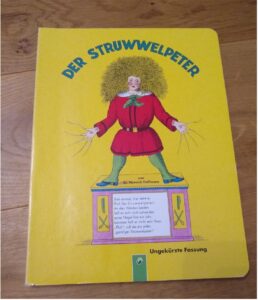
Another example would be the story of Hänsel und Grettel written by the brothers Grimm it has also some dark elements but is a lot more interesting and has a happy end. Most of the Grimm stories are more up to date and more appropriate for the current time.
That story is about two siblings who get lost in a forest and find a house made out of Gingerbread that they feast on because they are hungry. The catch is that the house belongs to a witch, and she gives them an invitation to eat inside, then she tries to put them in the oven and eat them, but they manage to push her in it and thereby save themselves.
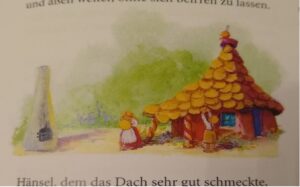
(Hänsel und Gretel)
I, myself think that some German fairy tales are very nice and interesting stories, but I would be cautious which ones I tell a child because they can be very scarry or inappropriate for our current time.
A good example for a nice fairy tale would be Aschenputtel also written by the Grimm brothers (the origin is really complex and ranges from China to Italy till it reaches German folklore). This story is also the origin of Cinderella a Disney movie that made it popular all around the world. The story is about a girl who has to deal with a mean stepmom and two mean stepsisters that make her do many chores and abuse her as a sort of maid. Not only that but they also are really mean to her. But one day the prince hosts a dance to find a new wife and she sneaks out and goes to the dance. She got her clothes and other things from a magical tree. Her looks impress everybody and the prince wants to get to know her better, but she flees because she has no time left however, she loses a shoe, and the prince searches the whole country for her from the hint of her shoe size until he finds and marries her.
There you go; some short forms of famous German fairy tales of course I left some parts uncovered but for a short overview this should be enough.
The fairy tale bocks are also full of different interesting illustrations, here are just a few:
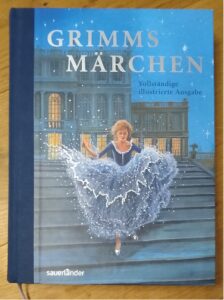
(translated): Cover of the book Grimm’s Fairy tales completely illustrated edition
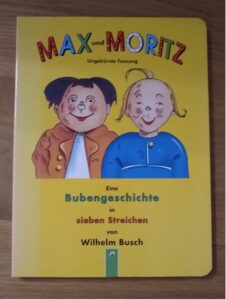
Cover of Max und Moritz (famous Fairy-tale about two naughty boys that end up grinded by a flour mill)
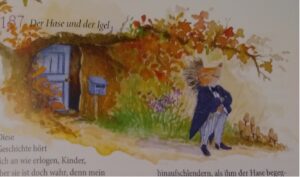
(translated): The Bonney and the Hedgehog
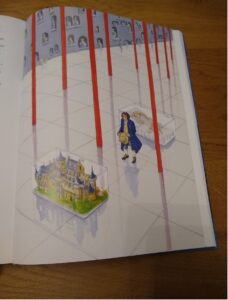
(translated): (The glass coffin)
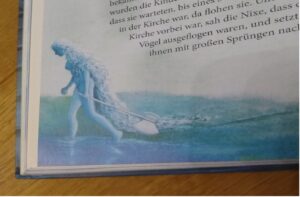
(translated): (The Water Nymph)
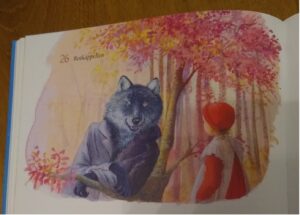
Little red riding hood (Rotkäpchen)
